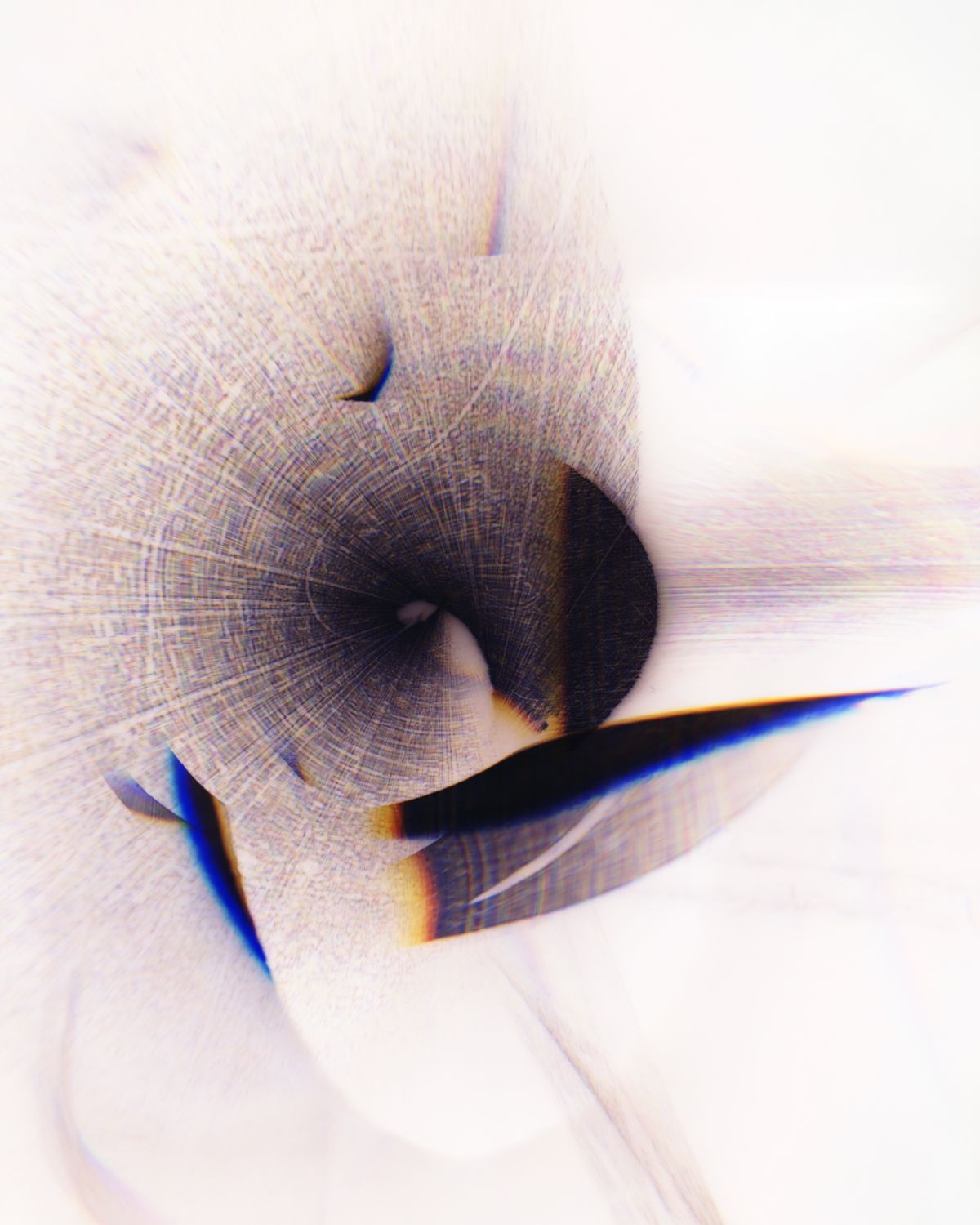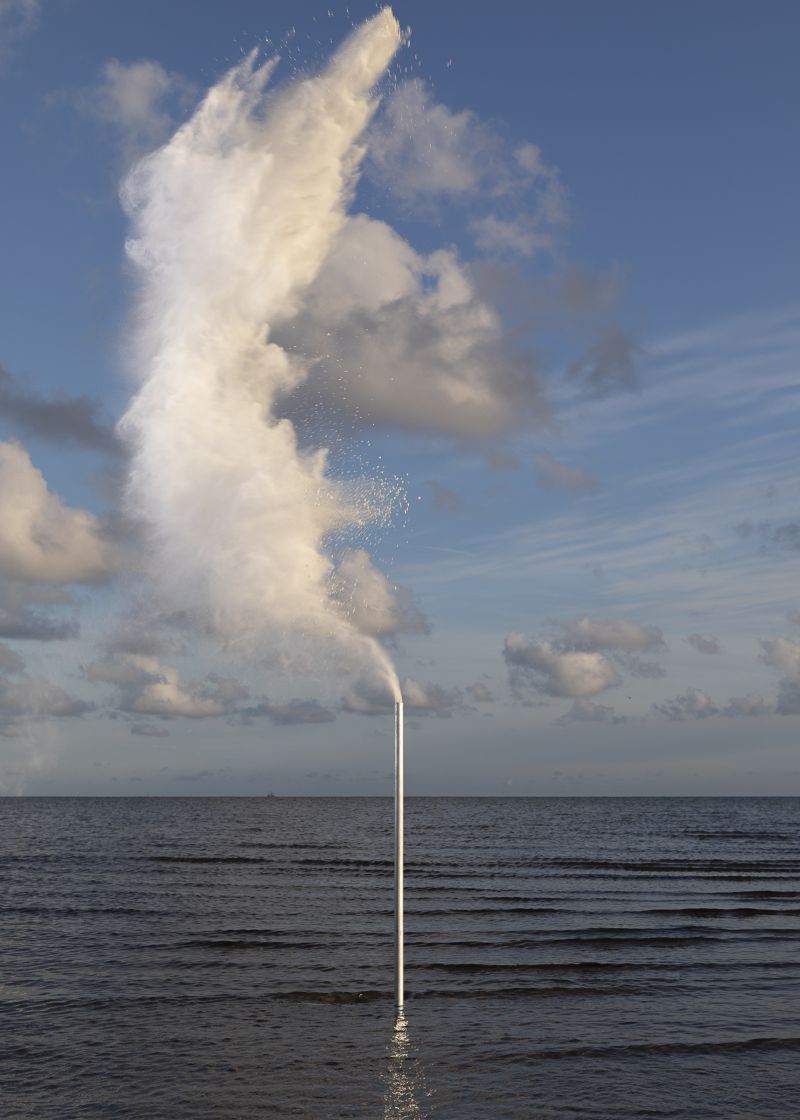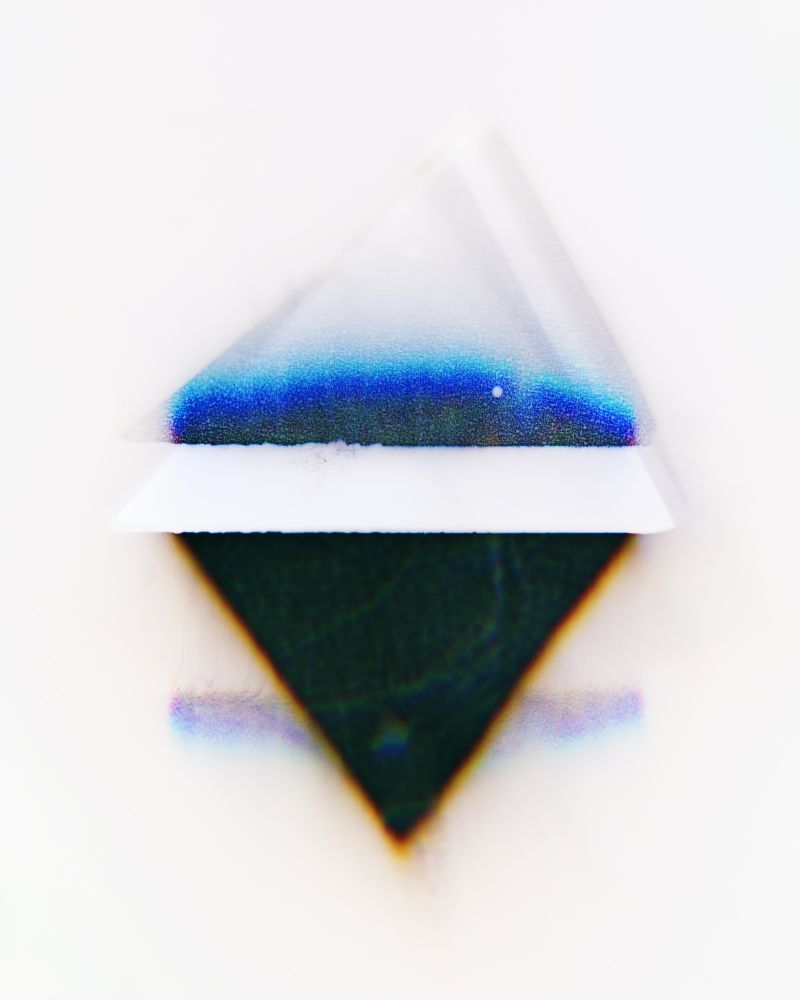SJOERD KNIBBELER | IN ELEMENTS

Solo exhibition | Sjoerd Knibbeler | In Elements
Questions to the elements
When you walk into Sjoerd Knibbeler’s studio, the first thing that strikes you – apart from the wonderful smell of fresh coffee and the fact that things are well organised – is the tripod in the middle of the former classroom. The camera attached to it is tilted so that the image made with that camera has the proportions of a portrait and not a landscape.
Sjoerd has been asked about it before, and his response is telling. He has an outspoken aversion to the concept of a landscape. In his view, it presupposes a space filled with passive objects, viewed by an active, creative observer. And his practice as a photographer or artist is anything but that! The cliché is that the photographic process captures reality both technically and objectively. Yet for Sjoerd, that is not the case. Indeed, his curiosity only blossoms at the boundaries of what photography can do. There’s such a large part of reality that is invisible!
Thanks to scientific knowledge, people are gradually finding out more about what moves deep inside the earth, how air flows and winds blow, how water moves around a ship or how clouds change shape. These may be very real and physical phenomena, but how can they be photographed? Or better still: what does it take to come into direct sensory contact with these phenomena, as an image-maker, and to create an image together with the flowing air and water? Such an image is the record of the interaction between two active, yet radically different beings – a portrait of that encounter.
In the series Exploded Views, Sjoerd Knibbeler shows the outcome of an expedition that arose from the question: if light itself is really invisible and only the refraction of sunlight makes the world visible and creates colour, what kind of images would arise if I experimented with the refraction of that light without there being a world that is made visible? It sounds scientific and philosophical at the same time, but for Sjoerd, such a question is primarily a practical one. He built a wooden cabinet in which sunlight is brought into the room through mirrors and lenses.
In that dark room, he placed glass prisms in extremely varied shapes, sometimes at three different heights. Triangles, flattened spheres, and intricate wave and shell shapes. Light-sensitive film was placed at the bottom of the cabinet, which could capture the spectacle of the refracted light. Through a glass bottom and a mirror, he could see the results of his minute shifts and adjustments.
Looking at the images, one takes an adventurous trip to an impossible place: the inner space of sunlight, where an infinite number of shades, shapes, fields, and lines appear to be possible. Everything you see is not invented but found, simply by experimenting with one’s own hands and by working for months and years through questioning ignorance, in a constant interaction between hands, brain, and eyes. The photograms do not depict anything. They are not fantasy images but pure reality, even though there are no bodies or objects, no space or direction. The images are the record of the encounter between sunlight and Sjoerd Knibbeler’s working method, created in the patient womb he built for it. The images are angels, they only existed for a short time, in a precarious balance.
The In Elements series consists of photographs made on the mud flats near the German island of Föhr. Only the elements prevail here: the sky with sunlight and clouds, rain, and wind; the sea and the scurrying life in the dried-up seabed, with an occasional glimpse of the coast. Sjoerd introduces two things into that vast natural environment: a vertical steel tube emitting a cloud of chalk particles, and his camera recording what happens during that chalk explosion in a certain direction, with a certain wind direction, and at a certain time of the day. This small set of variable ingredients produces an astonishing visual richness.
And what is that chalk cloud doing there? One can view it as the artist’s question to the environment, to the elements. The image, with the reflection of the violet light of the rising sun in the drifting chalk, and the shape of the cloud as a result of the wind, forms an answer. Or, better yet, part of a probe, a measurement. With this long series of cloud-shaped questions, the artist is absorbed in the environment and the elements. Excited and equanimous, he is both large and small, both an existential “I” and an insignificant piece of cosmic fluff.
Anyone who has heard of the plan to combat global warming by dispersing huge clouds of light-reflecting chalk particles into the stratosphere will see another question in Sjoerd’s chalk clouds on the German mud flats. It is certainly an exciting and seductive image, but is it a good idea? With the questions of a scientist, the longing of a poet (he’s looking for a sensuous, visual image!), and the working methods of an inventor, Sjoerd Knibbeler single-handedly, tentatively, and questioningly makes the familiar new while creating places to meet the unknown.
Text: Dirk van Weelden



